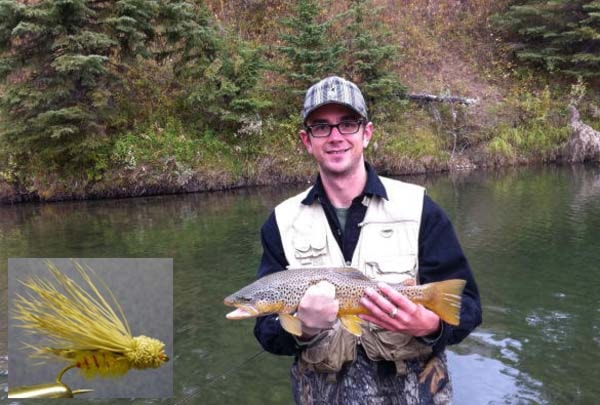In the mid-’60s, when I was a new fly fisherman, but before I started fly tying, I watched many women tying flies at their desks in the Livingston, Mont. shop of the legendary Dan Bailey.
Few of them fished, they told me, and they tied quickly to standard pattern recipes, or did custom orders tied to the specifications of customers.
On another trip, not one of the Bailey Shop’s women could, or would tell me exactly what fur they were using to tie Bird’s Stone Fly Nymph #2, the most successful salmon fly nymph I knew then, and still. (Research and experience told me the fur was dark brown fox and that the trout particularly relish the soft brown salmon fly nymphs between molts and before they harden into their usual crunchy black shell.)
When I was last in Bailey’s shop in 2007, there was nary a tier to be seen on the premises, and I expect most of huge fly inventory on display had been tied by non-fishing women in Africa.
I expect that none of these skillful women tiers ever gave a thought to the futures and fates of any of the thousands of flies they tied.
I do not particularly enjoy tying flies. But I have tied many thousands of flies I could not buy, patterns to my own specifications, one or two originals, but most simply my modifications to known fly patterns. These flies worked well for me, and I fished so often then that I needed to tie a considerable personal supply for each coming season, and also for many anglers who liked — and could not buy — the patterns.
One of the hypnotic pleasures of tying a quota of this or that pattern on an ugly winter day, was dreaming of better days, of the coming season, and the future, the fate of many of the flies as they were completed and consigned to the storage drawers and fly boxes.
It is now two years since I tied my last fly; now that I can’t wade, I fly fish so infrequently that I probably have a lifetime supply of my favourite flies in the drawers in my tying room and in the fly boxes in my fishing vest. But a new pleasure has arisen: vicarious fishing, participating in a way in the fishing of others through their stories of their successes with flies I have tied.
This season, probably because of the continuous spate of high, cold, muddy water, my two beetle patterns, the Despickable and the Short Black Booger, have provided the bulk of the success stories from anglers who are still using specimens I tied, or are now tying their own versions of these very simple, quick ties.
But my favourite story of the fate of one of my flies involves my personal favourite of “my” patterns in my favourite time of the fishing year, the late season, and hunting for large brown trout moving up to their spawning beds. The venue is my favourite grasshopper bank which I absolutely cannot fly fish now, because my legs can’t handle the steep banks and the deep wading with the hazard of deposits of “quicksilt.”
My friend and colleague Robert Short, with Blaine Bertagnolli, were lunching opposite that bank on Oct. 1; overnight, summer had become fall. They had no success fishing some good water up to the bank and had seen only a few small trout rising for a scant hatch of miniscule blue-winged olive mayflies; there were no grasshoppers buzzing about.
After lunch Robert suggested to Blaine that he tie on a hopper. He didn’t have any in his box, save for a bedraggled candy-stripe pattern tied by your hand. He informed me that he had saved the fly as it was the one that had produced his first fish on a fly rod. I told him that the fly was a proven success and should be re-employed. Minutes later Blaine Blaine landed a lively brown trout that measured 51 cm.
“Candy stripe” refers to the red buttonhole twist rib on this, one of my many variations of my version of the Le Tort Hopper. I believe some red improves any dry fly, which is why most of my dries have red heads; I also believe any under-water fly is the better for some copper wire weight and flash.
Then comes the personal plea from Robert, as accomplished a fly finangler as any of the many I know: “I have no more candy-striped Le Tort Hoppers; I maintain that they were the best flies that you ever tied.”
Well, I have a pint of candy-stripe Le Torts with untrimmed deer hair heads from my last tying session. Maybe the tedium of clipping those heads will induce dreams of tying flies again — for use by others. Having a small part of me going on non-wading, long distance fishing trips is satisfying.
Bob Scammell is an award-winning outdoors writer living in Red Deer.
